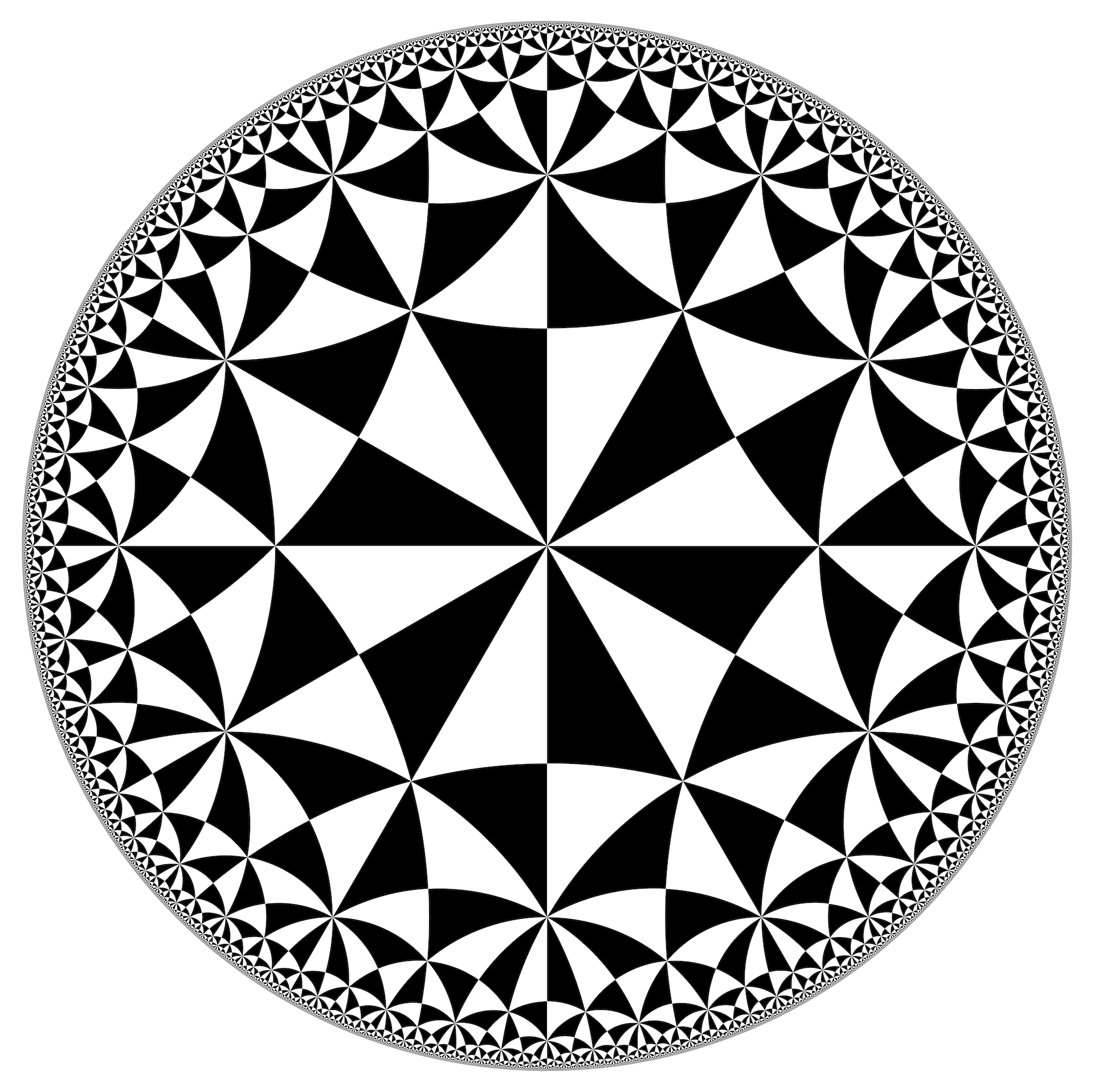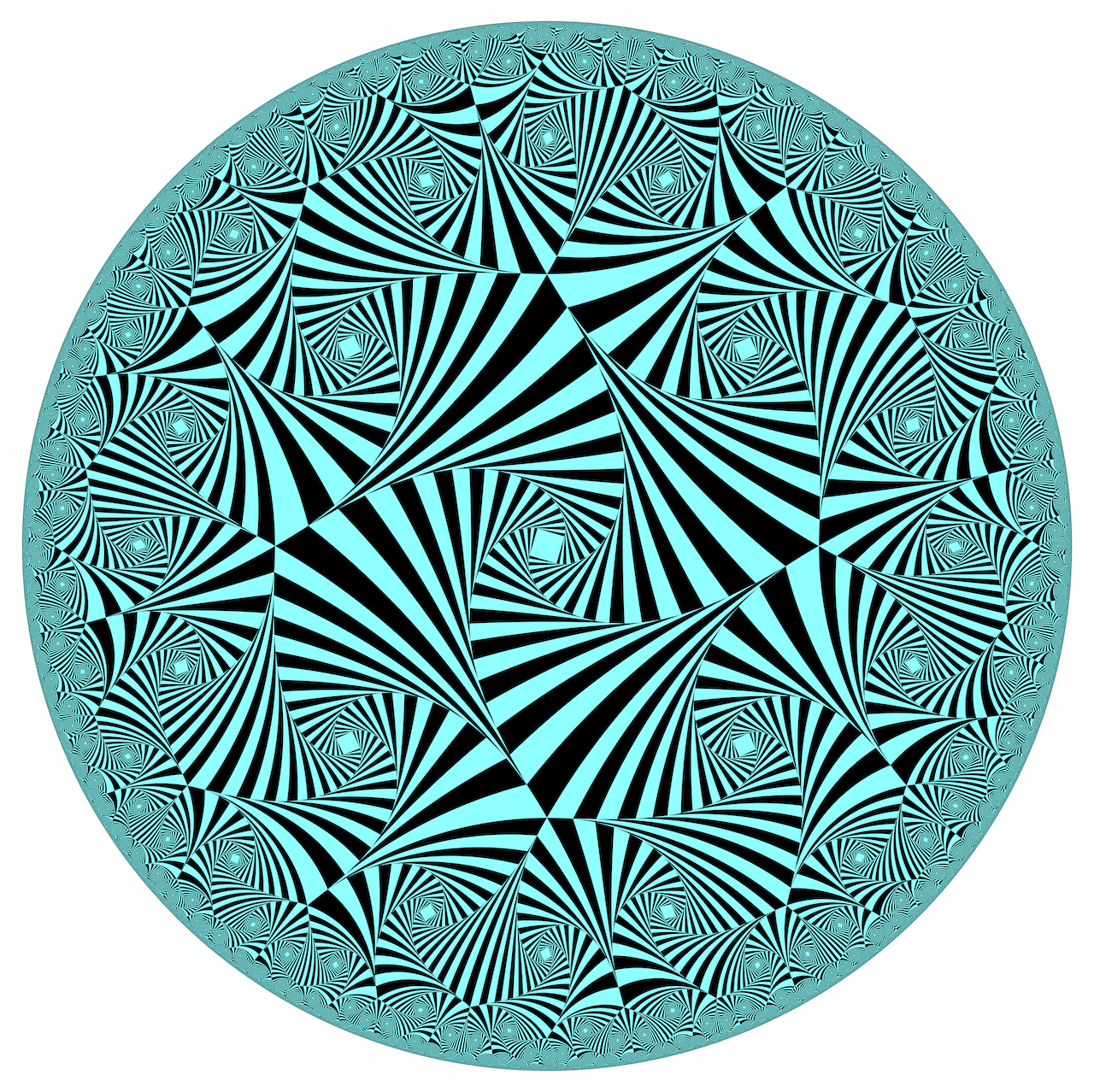In 1957, the well known geometer H. S. M. Coxeter wrote to Dutch graphic artist M. C. Escher to ask if he could use two of Escher's symmetry drawings to illustrate his paper Crystal Symmetry and its Generalizations. Escher readily agreed. As a courtesy, Coxeter sent Escher a reprint of his article. Escher was quite excited about one of the figures in the paper. He wrote to Coxeter, "some of the text-illustrations and especially figure 7, page 11, gave me quite a shock". The figure is just like the computer redrawn version below.

This figure is a hyperbolic tiling with triangular tiles which diminish in size and repeat infinitely within a circle. Escher had been looking for a way to capture infinity in a finite space for a long time. After figuring out the geometry of this figure, he produced his Circle Limit series, e.g. Circle Limit III. From his sketch we guess that he may draw those figures with ruler and compass.
It is not a surprise that people tried to write programs to draw hyperbolic tilings after computer was invented. It can be done by reflecting an initial triangle hyperbolically. However this approach is wasteful and inaccurate because one needs to compare if two points with floating-point number coordinates are the same again and again. In 1990s, mathematicians found that the tiling's underlying group of symmetries is special. They developed the theory of automatic groups that can be used to draw hyperbolic tilings efficiently and accurately. I wrote a brief introduction about the hyperbolic geometry and group theory involved in drawing such hyperbolic tilings. I also summarized the key points in a large poster. Readers can zoom in this 60 MB PDF file to see the exquisite detail on the boundary of the big circle.
For interested readers who want to create their own tilings, I suggest them to read James W. Anderson's Hyperbolic Geometry to learn more about hyperbolic geometry. Basic group theory concepts such as group, subgroup, coset and orbit are also necessary. They can be found in any abstract algebra textbooks. Then the readers can read Silvio Levy's paper Automatic Generation of Hyperbolic Tilings to know how to combine these things together. They may find my GAP program code is also helpful.
Once the principles are grasped, the drawings are not limited to triangle tilings any more. There are infinitely many variants. I list one of the possibilities below. Readers are encouraged to generate their own artistic tilings.

by Shengyi Wang, 2023